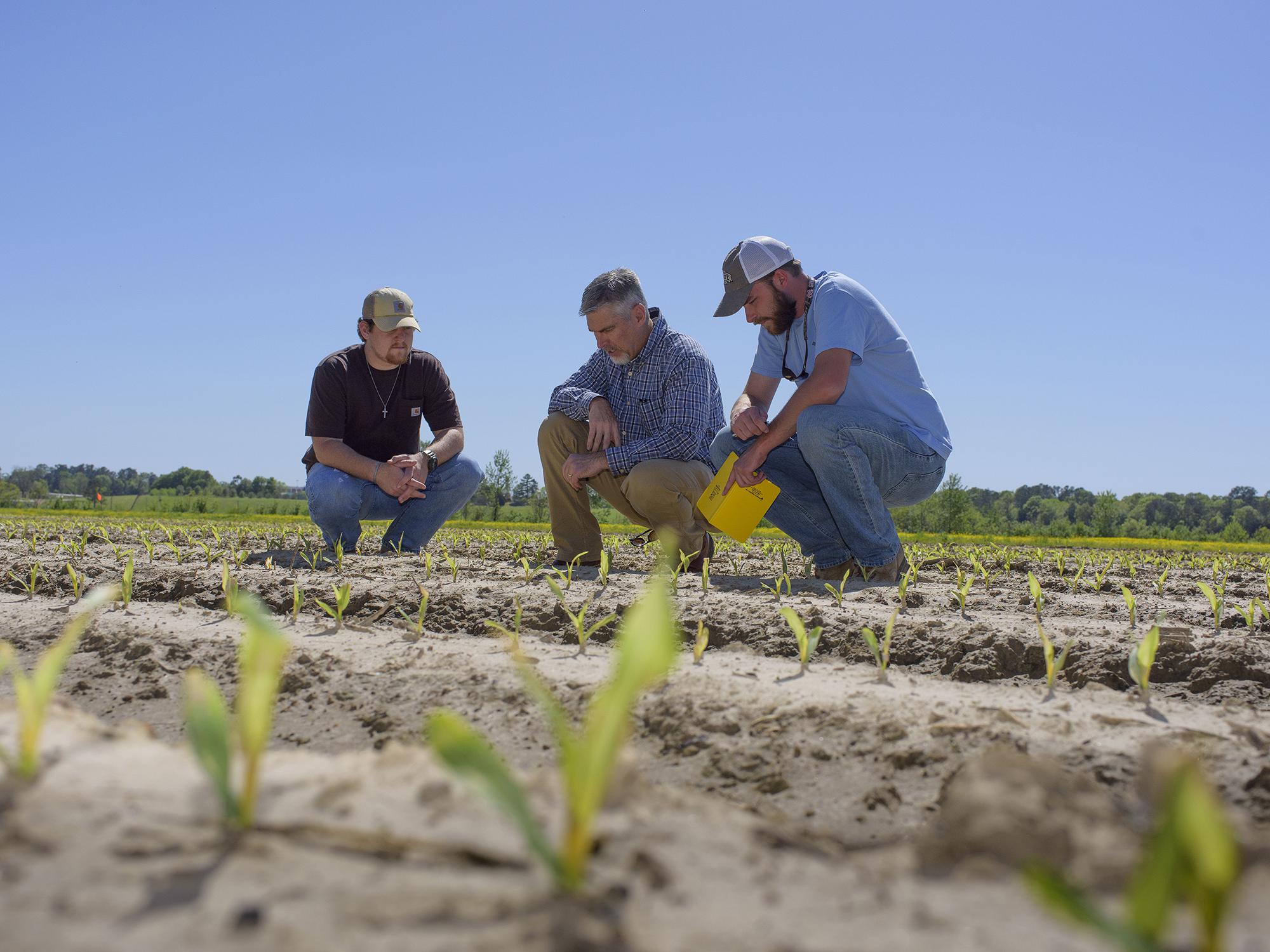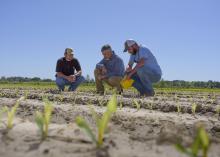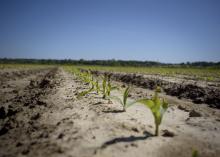Information Possibly Outdated
The information presented on this page was originally released on April 20, 2018. It may not be outdated, but please search our site for more current information. If you plan to quote or reference this information in a publication, please check with the Extension specialist or author before proceeding.
Corn planting, progress hindered by cold, rain
STARKVILLE, Miss. -- More than half of Mississippi's expected corn crop has been planted and is emerging, although cool and wet weather have made progress difficult.
Erick Larson, grain crops agronomist with the Mississippi State University Extension Service, said planting began in late March but has been hindered by frequent rains.
"Planting primarily began about midway through the third week of March, and every week after that, we've tried to plant as soils dry in between rain showers," Larson said.
The U.S. Department of Agriculture estimated 64 percent of the state's corn crop was planted by April 15. While on track with the five-year average, this amount is well behind 2017's early-planting season.
“Last year, we had nearly the entire crop planted from March 15 to April 20, but we’re lagging behind that this year,” Larson said.
The south and central Delta have made the most progress, while areas in northeastern Mississippi are further behind.
Larson said frost on April 8 and 16 may have burned some of the corn tissue above ground, but since the plant’s growing point is protected below ground, the plants will survive. A bigger problem has been continued cool weather in April.
“The crop is not making as much progress as it sometimes does because growth is dependent on heat unit accumulation, and we’ve not gotten the heat units that we typically do at this time of year,” he said.
Warm weather in early May could allow the crop to catch up a bit. A crop that starts slowly reaches reproductive stages later in the summer when temperatures are higher, which can hinder good ear development.
In addition to frequent rains breaking up the planting season and cool air slowing plant emergence and growth, bird predation has been a big problem in some Delta cornfields.
“Too much predation can require a replant,” Larson said. “Corn is planted at a relatively low population and doesn’t compensate well for variance in the stand.”
Mississippi growers are expected to plant about 500,000 acres of corn this year, just slightly below the 560,000 acres planted in 2017.
Brian Williams, Extension agricultural economist, said the two factors that drive corn acreage decisions are the price of corn relative to other crops and the costs of growing corn.
“The corn-to-soybean and the corn-to-cotton price ratios have both been working against corn for much of this year,” Williams said. “The general fundamentals are much more supportive of soybeans and cotton, while the fundamentals for corn have been much weaker, particularly with such large supplies of corn in storage.”
December corn futures mostly trended up since January and are now trading at $4.07 a bushel, which is about the same as prices at this time in 2017.
“The large stocks of corn in storage are keeping a lid on prices, but traders are watching the export situation closely as negotiations with NAFTA and China continue,” Williams said. “For now, there hasn’t been much of a long-term impact on the markets, but it has increased their volatility to a certain degree.”











